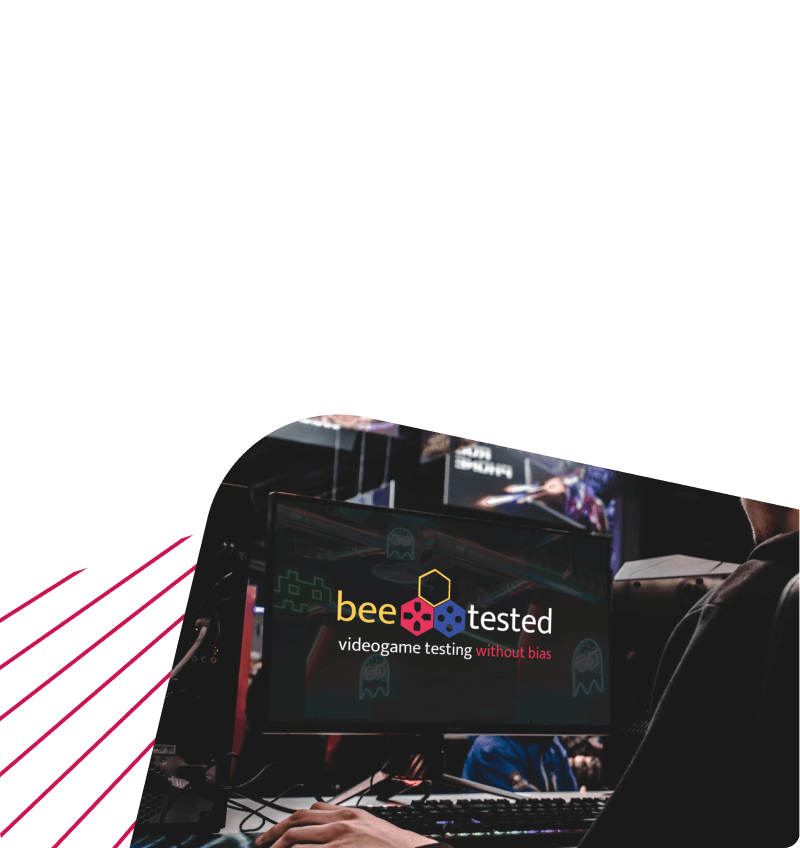
Real-time customer analytics: Empowering business decisions
The digital landscape never sleeps. Businesses online are always trying ways to enhance customer experience and satisfaction. According to a survey by Statista, 94% of customers are more likely to purchase again if they get a positive customer experience. But in a rapidly evolving world, customer preferences are also changing.
This situation demands a solution that immediately captures market trends and customers’ needs as they happen in real-time. So, what’s the solution to this dilemma? The answer is collecting real-time customer data, analyzing it, and generating actionable insights.
Moreover, the global data analytics market size was valued at $271.83 billion in 2022, and it would be $745 in 2030, growing at a CAGR of 13.5%. In this exponentially growing market, businesses must understand the nitty-gritty detail of real-time customer analytics and how to empower their business from it.
What is real-time customer analytics?
Real-time customer analytics is analyzing customer data as they interact with the platform. Real-time customer analytics aims to quickly assist in data-driven decision-making to enhance customer experience and, in turn, benefit the business. Unlike historical data, which is static, real-time customer analytics is a dynamic system that provides the following information about the customers:
-
Behavioral data: This data includes pages that the customer visited, time spent on each page, items that were added to the cart, etc.
-
Transactional data: This data includes the customer’s purchase history, purchase time, and the order’s average value.
-
Demographic data: Demographics include geography, gender, age, marital status, etc. This data helps to personalize the services or products for them.
-
Feedback data: Feedback includes reviews and ratings. It helps businesses understand the sentiments of their customers. Companies can improve their weak areas based on customer feedback.
There are three main components of real-time customer analytics software:
- An aggregator that receives real-time data from various sources.
- A broker that makes data available for usage.
- A data analytics engine that analyzes the data and creates actionable insights.
Importance of customer analytics in today’s business landscape
Creating a customer-centric platform is crucial to success in today’s hypercompetitive business world. The global customer analytics market size was valued at $6.25 billion in 2021, and it would be $30.69 billion in 2028, growing at a CAGR of 19.34%.
-
Personalized customer experience: Customer analytics enable companies to suggest highly personalized products and services. According to Mckinsey and Company, businesses that provide personalized experience generate 40% more revenue than those with average experience.
-
Data-driven decision-making: C-suite executives must make critical business decisions that decide the company’s direction. Leveraging customer insights from data, they can refine their strategies. These data-driven strategies define the company’s roadmap, and eventually, businesses make more revenue.
-
Customer retention: 89% of businesses say that excellent customer service is why they retain customers. Companies today can finetune customer service by analyzing customer journeys through streaming data and maintaining customer retention.
In this article, we’ll talk about:
- What is real-time customer analytics?
- Importance of customer analytics in today’s business landscape
- Benefits and use cases of real-time customer analytics
- Use cases and industries
- What do you need for real-time customer analytics?
- Is it better building real-time customer analytics in-house or using managed services?
- How can DoubleCloud help with real-time customer analytics?
- Conclusion
Benefits and use cases of real-time customer analytics
Personalization and real-time marketing
When businesses have customer data, they can personalize their products or service according to them.
They can change their system according to customers’ feedback, keep customer loyalty, and generate revenue. For example, 80% of watch hours on Netflix come from recommendation systems, and only 20% come from search.
Customer retention and churn prediction
When businesses have real-time data about their customers, they can predict which customers are churning. By analyzing data, companies can assess the reason behind customer churn. They can develop comprehensive strategies to reduce customer churn.
Fraud detection and anomaly detection
Businesses can leverage machine learning models on streaming data. These ML models can alert the tech team if any unusual activity is detected.
Improve your upselling and cross-selling strategies
Cross-selling and upselling are most common in the e-commerce industry. For example, if a customer purchases a laptop. The recommendation system can show laptop bags as cross-sell. The goal is to enhance transaction value. Secondly, consider the example of a customer skipping the $50 category headphones because he previously used $100 category headphones. The recommendation engine can analyze the streaming data to recommend expensive headphones.In this way, the business keeps customer satisfaction and enhances revenue.
Minimise wait times
Using streaming data, businesses can predict future traffic. When businesses have ideas about increased traffic, they can allocate resources accordingly. This saves customers from the hassle of queueing.
Use cases and industries
-
Retail and e-commerce: Retail and e-commerce is the best use-case for leveraging real-time analytics. According to a recent Forrester Study, out of all the industries, personalization’s effectiveness is highest in E-commerce (45%). E-commerce stores can provide customers hyper-personalized shopping experience by understanding real-time market dynamics. For example, 35% of the revenue on Amazon comes from personalization engines.
-
Banking and finance: Real-time finance analytics helps detect fraudulent activity. Anomaly detection is the most critical use case of real-time customer analytics. For example, the Nordic global bank Danske reduced false positives for fraud detection by 60% and increased True positives for fraud detection by 50%.
-
Telecommunications: Telecommunications companies use real-time analytics to understand individual consumers’ needs and suggest personalized packages. Moreover, it helps identify pain points by understanding customer sentiment, which can help reduce the churn rate. Deloitte and Mckinsey have various case studies explaining how they helped telcos retain existing customers by leveraging real-time analytics. For example, Telefonica Spain leveraged insights from real-time data to enhance customer usage by 20%.
What do you need for real-time customer analytics?
The first thing you need for real-time customer analytics is data. Once you have the data, it’s time to preprocess it, then analyze and visualize it to generate actionable insights. The practical implementation of real-time customer analytics consists of several elements and tools, which are as follows:
Stream processing frameworks
Stream processing frameworks are essential for ingesting, processing, and transforming real-time data. There is no analytics without data. The first step in real-time data analytics is identifying all the data sources. Sources like websites, mobile apps, and social media are critical for understanding a diverse customer base. After identifying data sources, the second step is integrating that data into the system. Integrating and unifying data from various sources is called data integration. Frameworks and tools used for stream processing are as follows:
-
ClickHouse is an open-source column-oriented DBMS that generates real-time data analytics using SQL queries.
-
Apache Kafka is an open-source distributed streaming platform developed by Apache Software Foundation to handle real-time data fault-tolerantly and with low latency.
-
Apache Flink is an open-source distributed framework that processes streaming and batch data. Firstly, Flink applies all the preprocessing steps and prepares the data analysis. Flink can then be integrated with machine learning libraries for tasks such as anomaly detection, predictive analytics, etc.


Loja Integrada & Pagali switched to DoubleCloud for Processing a Massive Amount of Financial Data
The storage time of data required for investigating financial fraud crimes has been increased by 6 times up to 90 days.
Analytics and visualization tools
Once the data is integrated into the system, it’s time to analyze it and generate actionable insights. As explained earlier, Flink is the most commonly used tool for analytics. These analytics give businesses the roadmap to what needs to be done.
Let’s suppose a customer is browsing an e-commerce store looking for a product. In this instance, the recommendation systems personalize the product suggestions that the user is most likely to be interested in and make a purchase.
Seeing is believing. Besides analytics, visualizations are equally important. Visualizing real-time customer interaction with the platform further, refine the decision-making process. Tools used for streaming data visualization are as follows:
Kibana is used with Elasticsearch. Kibana integrates with various data sources for real-time data visualization. You can make interactive dashboards with Kibana. These visualization tools enable customer experience management and allow businesses to respond quickly to changing market trends.
Grafana is another visualization tool that provides real-time time series data visualization dashboards. Teams can share visualizations from Grafana, even with employees who don’t use Grafana.
Cloud-Based solutions or managed services
Making an on-premises analytics system can be challenging. Cloud-based solutions simplify this problem by managing the necessary infrastructure. Businesses can leverage a cloud-based platform to outsource the infrastructure management to the vendor and focus more on analytics and visualizations.
DoubleCloud can assist businesses with real-time analytics. We use ClickHouse DBMS, which is 100-1000x faster than other traditional DBMS and Kafka. Our AI systems leveraging GPT-4 quickly extract insights from analytics, guiding businesses to an unbiased market report.
Is it better building real-time customer analytics in-house or using managed services?
Although building in-house customer analytics provides benefits such as customization and data governance, there are some cons to it as well. These challenges must be considered before building the customer analytics engine, which is as follows:
Resource intensive: Building on-premises real-time customer analytics requires hardware and dedicated staff.
Maintenance: Once built, the organization must ensure that the whole system, both hardware and software, works smoothly.
On the other hand, using managed services such as DoubleCloud frees businesses from the headache of developing and maintaining analytics systems. They can solely focus on analytics and visualizations to make business strategies.
How can DoubleCloud help with real-time customer analytics?
Developing and managing in-house infrastructure and clusters for ClickHouse can be resource intensive.Moreover, it adds an extra burden on businesses to make sure everything runs as expected, and the system is secure.
This is where DoubleCloud comes into play. DoubleCloud provides a Managed Service for ClickHouse and Apache Kafka, relieving businesses of the complex tasks of developing and managing in-house infrastructure and clusters. Now business can accelerate their data analytics using ClickHouse and DoubleCloud. The procedure works as follows:


DoubleCloud Visualization. Get insights with ChatGPT!
Don’t waste time reading numerous reports and manually analyzing data — rely on AI-Insights and get fast and accurate conclusions.
Key features of DoubleCloud managed services are as follows:
-
This managed service allows for the real-time generation of analytical reports with SQL queries.
-
It supports functionalities such as sharding, enabling the distribution of loads across DB hosts.
-
DoubleCloud also provides hybrid storage, supporting ClickHouse over S3, so old data automatically transfers and is stored in S3 with EBS.
-
DoubleCloud provides a public API. This allows users to deploy, modify, and manage all four of DoubleCloud’s services. These include creating and deploying charts and dashboards via an API available through the Python SDK, GO SDK, or directly through Grpc.
Testimonial
Beetested
Beetested is a platform that assists game studios in improving their games in the development phase. They collect the real-time emotions of gamers corresponding to what’s happening in the game. Quick real-time analytics is central to Beetested services. Beetested knew they needed ClickHouse, but managing the whole infrastructure could be challenging as a startup. Hence, they utilized DoubleCloud services. Beetested CTO Juan Palacios says:
We wanted to use ClickHouse because we have a lot of data to process and I’ve used ClickHouse before, so I knew what it could do. DoubleCloud gives us an easy way to set up all the architecture we need and also an easy to use visualization tool so we can present the information to our customers in an understandable way.
Conclusion
Real-time customer analytics means analyzing customer data to make data-driven decisions quickly. The aim is to enhance customer experience and make revenue for the business.
Pros of real-time analytics include personalizing the service/product for the customers, quickly making effective business decisions, and reducing customer churn. Plus, real-time analytics is used in various industries such as e-commerce, banking, telecommunications, etc. The data team, including data engineers and analysts, can extract insights from real-time data and help executives with business strategy.
DoubleCloud assists businesses with cloud-based solutions for real-time analytics using ClickHouse and AI-driven insights extracted from analytics.

Beetested Analyze Millions Of Gamers Emotions With DoubleCloud’s Managed ClickHouse Solution
Frequently asked questions (FAQ)
How can real-time customer analytics help my business improve customer satisfaction and drive customer loyalty?
How can real-time customer analytics help my business improve customer satisfaction and drive customer loyalty?
Customer Loyalty increases when customers are satisfied. Providing customers with a personalized experience is the best way to improve customer satisfaction.
How can real-time customer analytics assist in identifying new business opportunities and driving revenue growth?
How can real-time customer analytics assist in identifying new business opportunities and driving revenue growth?
How can real-time customer analytics help my business gain a competitive edge in the market?
How can real-time customer analytics help my business gain a competitive edge in the market?
Start your trial today



